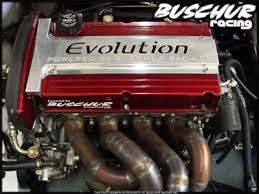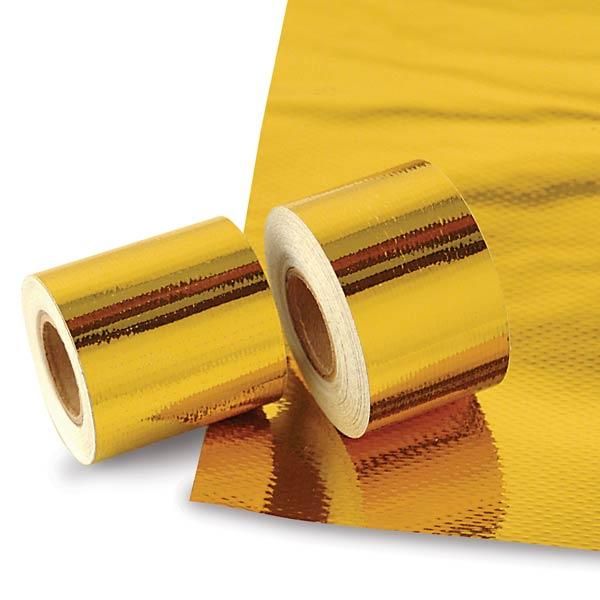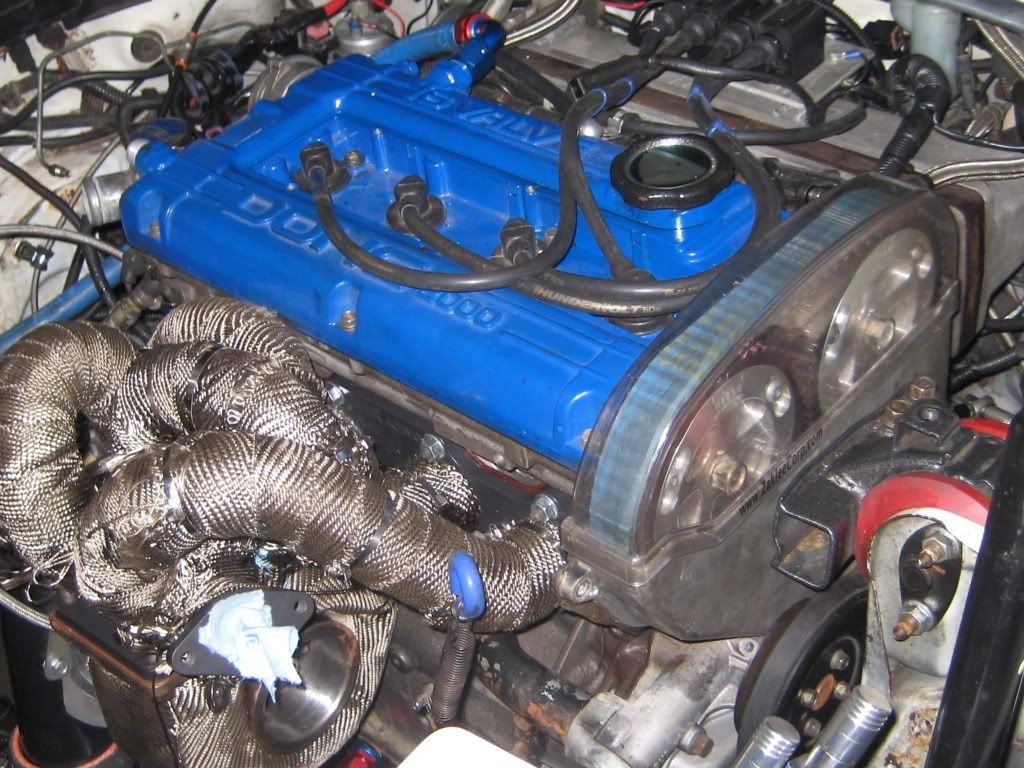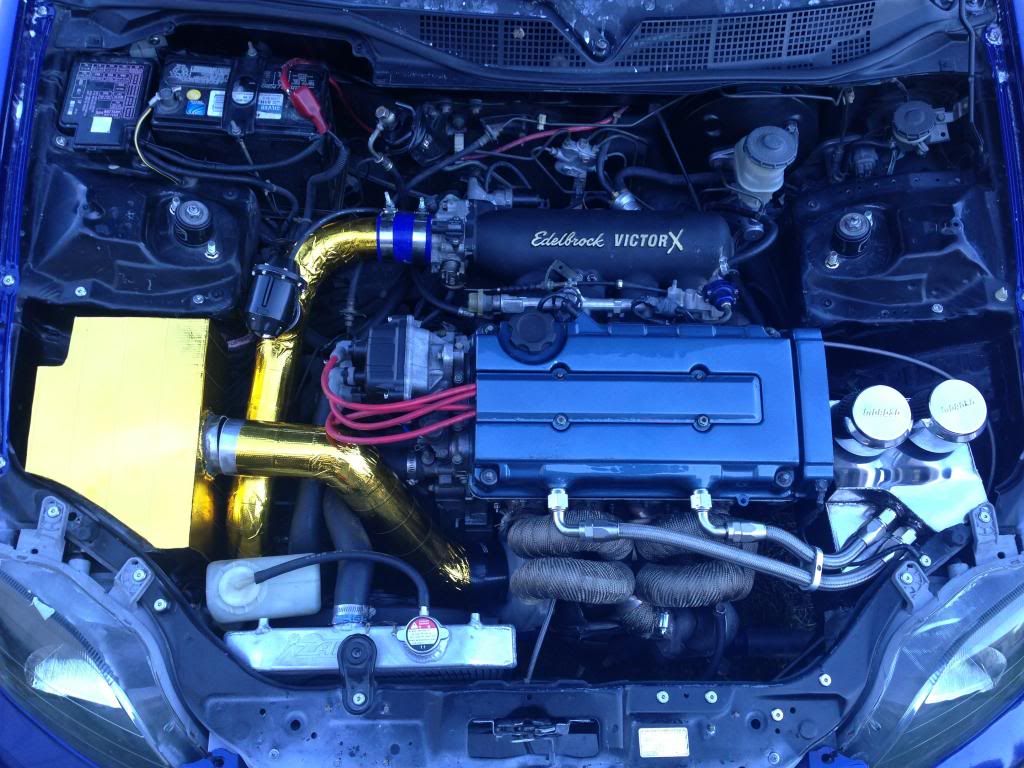Someone used to tell me. HEAT is the number one enemy of our engines, followed by friction; or whichever comes first.
This time, I've allocated some time into typing this post, dedicating this post to heat management as I think it's pretty much important to touch this topic because most drivers are not aware of the importance of keeping heat where it should be, and not to mention the importance of the cooling efficiency of an engine.
How does heat travel if you ask me;
Heat is emitted by a couple of ways. Conduction, convection and radiation. Heat is everywhere. Dive in a swimming pool, or walk barefooted down the road at 12pm and you will understand what heat transfer is. Heat always transfer from the hotter side to the cooler side of an object, or simply air.
Conduction
This is surface heat. Heat transfers through contact of two objects, like boiling a kettle. Touch something hot like your warm cup of coffee and heat is transferred to your hand.
Convection
Heat moves by liquid or gases.Heat expands and rises as it is less dense. That's why we have ventilators at home.
Radiation
This would be electromagnetic waves. You do not need UV or light to produce and transfer heat. Heat can travel through air, space and vacuum via this method and this particular method is what we are going to discuss on at the bottom of this post. Proof being a bbq pit, you don't have a bright light, but you can still feel the heat if you're standing nearby. This kind of heat transfer is also called infra red heat.
How to reflect/eliminate heat radiation :
Reflective surfaces. Chrome, gold, you name it. An experiment can be done with two cups with hot water. The first cup bearing a reflective surface inside it and the second cup not having any reflective surface inside it. Pour warm water, and you'd realise that the SECOND CUP takes a LONGER TIME to heat up.
This particular post will be on REFLECTING HEAT. I will talk about heat barrier and insulation another time.
Why reflect heat?
First thing's first, we all want certain parts of our engine to stay cool, as an engine performs best when it's getting cold air. CAI aka cold air intake is a good thing, but that, can be improvised.
Technology has gone so advanced that people are no longer insulating their intake pipes with exhaust wraps, but with heat reflective tapes used in space technology.
Heat reflective tapes is to be used on parts where we don't want hot air heating that particular component up. The tape is also to be used to protect certain components from engine heat.
For example :
Improvising exhaust heat shield
Here, you have a DIY heat shield, or at least I think it is an exhaust heat shield(pic taken from web). The tape is to be used on the BOTTOM side(facing the exhaust manifold) and not the top side of the heat shield as the exhaust pipes are emiting heat through radiation. The gold surface reflects it away from the heat shield. If you put your hand just above the top surface of a heat shield, you can still feel heat radiating as the heat shield itself gets soaked with heat. Stick some tape under the shield and you'd feel less heat on top of the heat shield.
Improvising Air Filter Heat Shield
Let's say you also made a heat shield for your intake system, an aluminium heat shield. You want to tape this up to reflect any heat surpassing the heat shield or heating the heat shield itself up. Keyword, REFLECT HEAT, not to forget.
Intercooler pipes(cold side) and air filter intake hose(for n/a engines)
Whatever that is cooler than the engine bay itself, should be wrapped to reflect heat. You don't want heat heating up the pipes itself, thus heating up the air inside the intake pipes. DO NOT, I repeat, DO NOT wrap the pipe that is between your turbo and intercooler as that is the HOT side of your pipe, and that pipe itself will radiate heat to cool itself down. No one would tell you this.
Keyword, INFRARED RADIATION.
Firewall
Having a hot cabin? Nuff said about this picture. Keep, heat, OUT!
Radiator Top Casing
This would be specially for turbo cars if your TURBINE HOUSING is too near the radiator. If it is not, the radiator itself radiates heat to cool water down.
Cam Cover
If you have real high headers like this, or a top mounted turbo. You don't want heated up engine oil or worse, fried valve seals.
Protecting Electrical Components
You can also use this tape to shield out heat that kills electrical components. Kindly take notice on the below picture of an Evo engine having such huge long runners emitting heat to the cam sensor just on the right side of the picture. A heat shield is installed along with gold tape to "save" the sensor from getting fried by exhaust heat. Most Evo owners know about this. Their OEM exhaust manifolds come with a heat shield. The moment the upgrade to long runners, this problem occurs. Wrapping the runners or coating it with ceramic will also help.


There are a couple of other places you can use this tape if you're creative, such as :
--> Aircond pipes
--> Exhaust Tunnel
--> Undercarriage just above rear muffler/midbox
--> Car roof if you're crazy enough
--> Electrical Components
--> Bottom side of your car hood
All the above items are wrapped with you Design Engineering's Reflect-A-Gold heat reflective tapes.
Reflect-A-GOLD is a metalized polyamide polymer laminated glass cloth with a high temperature pressure sensitive adhesive for use in extreme temperature swing environments. It is lightweight and easy to apply and remove.
Highly effective material for firewalls, fuel cells, engine covers, under hoods, engine compartment, bulk heads, seat bottoms – anything or area that needs protection from heat.
- For firewalls, bulkheads, engine covers, floors, seat bottoms & more
- Capable of handling continual temperatures up to 850°F
- Resists UV degradation for long-term performance
- Virtually NO clearance needed
- Adhesive protected by a release liner rated up to 325°F
- Light weight and flexible-Trim to size
My next post should be about exhaust heat management, aka heat wraps when I have the time to do it. Till then, hope you guys enjoy reading! Many thanks!
And by the way,
I have personally brought in some of this to sell as I had some enquiries even before posting this thread.
Below are the details :
Package includes: 2inch x 15feet roll OR 2inch x 30feet roll
Price:
2inch x 15feet roll - RM230.00
2inch x 30feet roll - RM430.00
Dealing method: COD Sunway/Subang - After Office Hours at night. Not appropriate to do during the day time.
Postage add RM15.00 for Semenanjung. Sabah/Sarawak RM25.00
Location of seller: Sunway/ Subang bhp ss14
Contact method/details: 012-9096996
Cheers,
Elton















